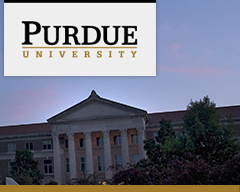Interface, especially bio-inorganic one, has been emerging as an indispensable and remarkable component for the breadth and depth of its impact on society as well as other scientific disciplines, especially in energy and medicine and health. These complex hybrid material systems, especially at small scale, require the marriage of advancement of theoretical studies, exploitation of computational methods, and non-traditional experimental validation to unveil their underpinning mechanism. This mini-symposium will center on the recent research advances in computational modeling, theoretical analysis, and experimental characterization of interfaces in the hybrid material systems at nano/micro scale. Contributions from researchers in the fields of solid/?uid mechanics, materials science, physics and engineering are cordially invited. Topics of interest include, but are not limited to:
- Multiple length/time scale material modeling and simulations
- Novel characterization method across multiple length/time scales
- Polymer composites
- Biocomposites
- Interaction between biological materials and inorganic nanoparticles, such as enzyme for energy conversion, DNA-enabled nanosystems
- Bio-inspired materials and biomimetic nanocomposites
Subscribe to RSS Feed (Opens in New Window)
|
Computational modeling of cell–cell interaction and multicell migration Xiaowei Zeng, University of Texas, San Antonio, United States |
|
|
Computational viewpoints of interaction between -nanoparticle and cell membrane Liuyang Zhang, University of Georgia, United States |
|
|
Tao Qu, Purdue University, West LafayetteUnited States |
|
|
Numerical and experimental investigations on biomimetic -material: stomatopod dactyl club Nobphadon Suksangpanya, Purdue University, United States |
|
|
Francois Barthelat, McGill University, Canada |
|
|
Strength improvement of cement pastes with cellulose -nanocrystals via short circuit diffusion Jeffrey Youngblood, Purdue University, United States |
|
|
Toughening mechanisms in bioinspired multilayered materials Sina Askarinejad, Worcester Polytechnic Institute, United States |
|
|
Rouzbeh Shahsavari, Rice University, United States |
|
|
Unveiling the resistance to penetration of the radular teeth of the Cryptochiton stelleri Enrique Escobar de Obaldia, Purdue -University, United States |
